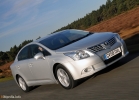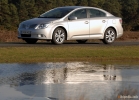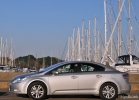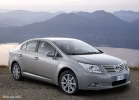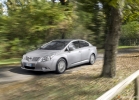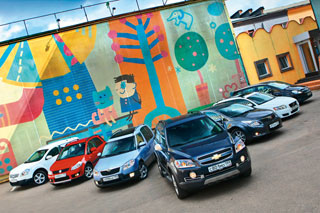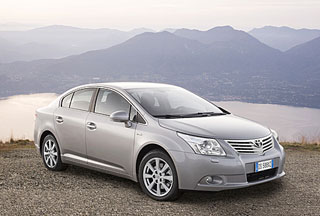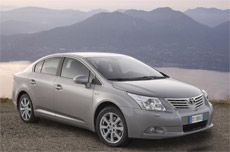Toyota Avensis test drive since 2009 sedan
Pentathlon of universals, or why Ford is better than Toyota, and Mazda is worse than VW
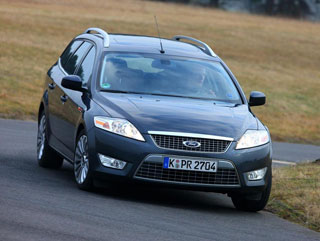 Toyota Avensis of a new generation and Mazda6 with a new turbodiesel as a fresh wind broke into a caste of medium -sized station wagons. For the first time they are found with Ford Mondeo Turnier, Peugeot 407 SW and VW Passat Variant in a comparative test of diesel cars with a capacity of about 150 hp.
Toyota Avensis of a new generation and Mazda6 with a new turbodiesel as a fresh wind broke into a caste of medium -sized station wagons. For the first time they are found with Ford Mondeo Turnier, Peugeot 407 SW and VW Passat Variant in a comparative test of diesel cars with a capacity of about 150 hp. They are able to fit in any parking place, but they have a sufficient expanse for four passengers and baggage. It doesn’t matter if you want to add speeds, brake or just steer, these cars will give you pleasure. At the same time, cars are comfortable, reliable, do not require expensive content and, of course, environmentally friendly.
Today we expect a lot from the new car, in this regard, the employees of the German publication Auto Zeitung decided to check with the help of comparative tests, how met these expectations are. Here is a comparison of five station wagons with a cost of 26,750 euros (Peugeot 407 SW) to 29,150 euros (Ford Mondeo) is not so cheap, but available to many European buyers. They will fight in the pentathlon of universals with diesel engines.
The power range is represented by the following indicators: 140 hp. (Ford, Peugeot and VW), 150 hp The brand new with the Toyota Avensis Combi 2.2 D-4D and 163 hp. Mazda6 Sport Kombi 2.2 CD. So, we are dealing with intellectual machines, more environmentally friendly diesel engines meet the requirements of today, and a fairly high torque will not let the driver get bored at the wheel.
Body and equipment
Peugeot 407 SW is the oldest car of all participants. The bend of the rear rack of the roof, directed against movement, the rear window, which occupies a considerable part of the side surface of the body, and the windshield is highlighted a forward. But for such extraordinary he has to pay, he is characterized by the worst review both in front and in the direction of the rear corners. True, the new Toyota Avensis with small windows in this regard is also not much better.
When comparing the volumes of PEUGEOT luggage compartments, it stands apart again. Having a 448-liter luggage volume (1,365 liters with folded rear seats), it clearly shows that only the image of the station wagon is implemented in it. After all, such an indicator can demonstrate a significantly shorter compact station wagon.
Competitors, first of all, Passat, show a different alignment. The maximum volume of its luggage compartment (1,731 liter) is not too different from the characteristics of the Ford Mondeo Turnier and Mazda6 Sport Kombi. But with a closed curtain of the luggage compartment and at the normal position of the rear seats, the German model is ready to offer at least 603 liters for baggage, significantly exceeding its rivals.
The remaining participants in the test in this parameter are not even able to get closer to Passat. Although the luggage compartment with a volume of 519 liters (Mazda) or 543 liters (Toyota) is enough for a family trip to rest. It is worth serious overload to be afraid only in the case of Passat: lushly equipped with various equipment, the tested car weighs 1,623 kilograms, so that 517 kilograms of its load limit are exhausted.
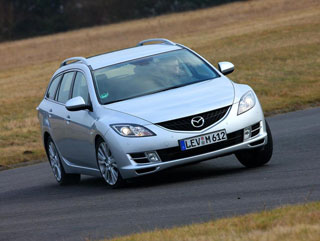 Its competitor Mondeo is capable of transporting up to 695 kilograms, however, it would be nice to equip the Ford system for regulating the level of the rear axle (665 euros) for security. VW also has such a useful option (730 euros), but this system is not provided for their foreign competitors.
Its competitor Mondeo is capable of transporting up to 695 kilograms, however, it would be nice to equip the Ford system for regulating the level of the rear axle (665 euros) for security. VW also has such a useful option (730 euros), but this system is not provided for their foreign competitors. But Japanese station wagons delight with their unusual mechanisms for folding the rear seats. For example, in Toyota one hand is enough for the backs to turn out. In Mazda, the backs equipped with springs can even be adjusted from the luggage compartment: using smooth pressing, they fold and form a flat surface about two meters long.
Even more offers VW, albeit for an additional fee of 86 euros. In this car, the back of the front passenger seat leans forward, allowing you to place a long beam up to the glove box.
By the spaciousness of the salons, cars are also very different. So, expect a strong delusion from a long 4.8-meter body of Peugeot 407 SW. The rear seat is characterized by special tightness, in which an ordinary adult will be too inconvenient, since the space in the legs and above his head is very limited. Yes, and in front, despite the freedom of movement, is also not so much space.
Four tall guys are best traveling to Ford Mondeo. Nobody will have to limit himself in movements in it. Mazda and VW are only slightly inferior to Ford'y in spaciousness. Toyota also does not lose too much, for passengers of the rear seats there are much larger space for the legs than in 407 SW.
Safety is best ensured in Passat'e. He does not have a driver’s feet pillows, like Ford'a, Peugeot and Toyota, but it is equipped with side airbags located at the rear of the cabin (Peugeot also has such pillows). Like Mondeo, for an additional Passat, you can also equip a children's chair built into the rear seat, which greatly simplifies the everyday life of a young family.
As for modern systems designed to help the driver, Peugeot suffers complete fiasco. Not a cruise control (option for Ford, Toyota and VW), nor observation chambers of the driver or car control system in accordance with the marking of the 407 model. But Passat, when choosing an appropriate option, informs the driver about a random exit from the trajectory, Mazda, again, for an additional fee, reports the danger of changing the trajectory if another vehicle moves near high speed.
But what about Avensis? This car has a full set up to the sensors warning about the accident. There is only one reservation: all these systems that reduce the risk of an accident are provided only for the top-end Tec-EDION, which, together with an automatic gearbox, costs no less than 38,950 euros ... so this option is unlikely to cause interest in A wide circle of buyers.
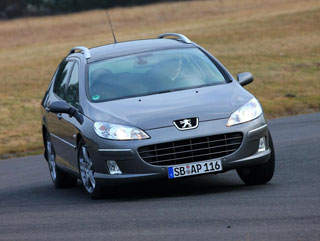 Comfort on the road
Comfort on the road But for a comfortable driving on these vehicles, it is not at all necessary to purchase a top set. After all, even the Germans, who became famous for their stinginess in terms of stock equipment, have air conditioning in standard configuration. But in order to install in these cars, and in the Peugeot 407 SW, climate control with separate temperature regulation for the driver and passenger will have to spend money. But Mazda6 and Toyota Avensis Combi SOL are equipped with this system by default.
All equipment of cars effectively prevents the increase in humidity in the cabin. And if the buyer Ford'a will try a little more, then upon arrival at the place he will get out of the car in a dry shirt: Mondeo can be equipped with ventilated front seats. Anyone who once checked the work of this ventilation will be understood with understanding to the price of 580 euros, requested for this pleasure (in addition, this includes the cost of installing a system of heating seats).
But even without this additions about the seats, Mondeo can only respond positively. Large chairs, upholstery are tightly stretched, where necessary, and the backs provide proper side support and are suitable for long trips. The VW Passat seats are even more convenient for people with various complexions, while in Peugeot high passengers are not very comfortable.
Here, even the lowest position of the seat is highly located, although the dimensions and upholstery are successfully selected. The Mazda seat would be nice to tilt more to create a support for long legs. But this is perhaps already excessive criticism: the main thing is that the driver is convenient, and for most passengers this is not fatal. Toyota chairs are also quite spacious, only their lateral support leaves much to be desired, at least, this applies to the leather seats of the dough participant.
We observe a similar picture and when a rear seat review. Ford and with a small margin of VW show the best combination of stiffness, shape and slope of the surfaces of the back and seat. The lag of French and Japanese competition is slightly not even with long trips of special claims to them. The soundproofing of cars is also quite good. The noise level that occurs at a speed of 130 km/h does not allow you to name Ford Mondeo, Mazda6, Toyota Avensis and VW Passat noisy. 70 dB in Peugeot 407 SW also does not force to raise the voice when talking and turning on the radio at full volume.
When accelerating, the noise arising due to the resistance of the body of the wind becomes more distinct, but even at a speed of 200 km/h in any of the station wagons, this noise does not turn into something terrifying. The work of the engines on the go is quiet, only their good -natured rumbling is heard. The Ford'a, Mazda and VW chassis are rigid, while the chassis of Peugeot and Toyota is softer. Mondeo shows the best settings. Strong body swing, appearing at Peugeot and Toyota after overcoming the waves of the road surface, in Ford'a are minimized.
VW Passat literally steps on Ford'y heels, both empty and with cargo. But Mazda allows the manifestation of stiffness when traveling at small obstacles, for example, at the joints of the roadway. Such quality can be considered as evidence of the sports talents of a Japanese car, but for someone it will cause disapproval. Toyota and Peugeot are especially smoothly passing, but on more noticeable road defects and with an increase in the load, they lose their confidence. At the same time, the chassis of Avensis'a is too noisy.
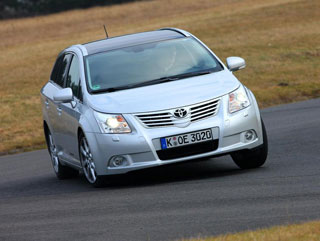 Engine and transmission
Engine and transmission While Ford and VW are equipped with familiar two -liter diesel units, imported competitors diversified their assortment: PEUGEOT has a modernized diesel engine with a capacity of 140 hp. Instead of 136 hp, which also meets Euro-5 standards. Toyota offers a new 2.2-liter 150-horsepower engine that also meets Euro-5 standards, and under the hood of Mazda is a new 2.2-liter engine with a capacity of 163 hp.
The same motor happens in two more versions of 125 hp. and 185 hp Average power of 163 hp And 360 nm torque is certainly enough to feel the cheerful temperament of the car and the joy of driving them. So, from the place of the station wagon, Mazda6 Sport accelerates to hundreds in 8.8 seconds, which is truly impressive, and it does not give up on the autobahn until the speedometer arrow shows 230 km/h. In matters of driving, this car is a real AC, its power potential is harmoniously revealed, and acceleration in each revolution range is optimal.
This dynamism lacks Peugeot with his obedient, but quickly spoiling with high speed behavior. The same can be said about Toyota, whose motor is idling too much. Their torque is much lower. But in order to keep up with Mazda, the driver of the 407th and Avensis, you need to lower the gears more often. And since these cars are quite long and their switching is not distinguished by perfection, this process is by no means as pleasant as in Mazda, the gearbox of which works quickly and accurately, like a masterpiece of mechanical art.
But what about the Germans? Ford and VW show the average results they have good manners, high power in a wide range of 1,500 to 4,000 revolutions, 6-speed transmission with convenient gear settings and switching lever. But they could not reach the temperament of Mazda, although the VW got closer to the Mazda level than Ford. Passat scores good points for fuel consumption: after passing the test, it showed the average consumption of 6.8 liters per 100 km, while Mondeo requires 7.3 liters per 0.3 liters more than Peugeot 407 (7.0 liters). Toyota Avensis noted the minimum consumption of 6.2 liters, and Mazda6, which consumes 6.7 liters, took second place in terms of economy.
Dynamics
If in reality Mazda requires a little more diesel fuel, then this is due to its amazingly obedient chassis. When managing, even a temptation appears to drive the next turn a little faster than usual, slightly slow down before the turn and again sincerely accelerate at the exit.
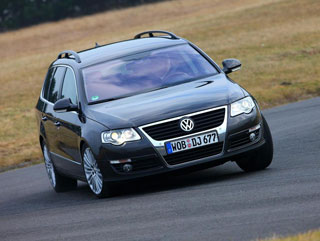 Mazda6 actually gives considerable pleasure, confirming the promises of advertising. It is obediently controlled and, thanks to the tangible influence of centrifugal force, allows you to use a very daring driving style. But attention: disconnecting the course stability system can lead to skidding, up to turns across the road. For Toyota Avensis, this behavior is not characteristic. With a direct comparison, this car shows slowness and courtesy in terms of management, as well as the provision of only a small part of the information about what is happening between asphalt and front wheels.
Mazda6 actually gives considerable pleasure, confirming the promises of advertising. It is obediently controlled and, thanks to the tangible influence of centrifugal force, allows you to use a very daring driving style. But attention: disconnecting the course stability system can lead to skidding, up to turns across the road. For Toyota Avensis, this behavior is not characteristic. With a direct comparison, this car shows slowness and courtesy in terms of management, as well as the provision of only a small part of the information about what is happening between asphalt and front wheels. On turns, the ESP system, which does not completely turn off, enters the game relatively early, making a piercing sound in especially dangerous moments. And during the passage of the dough for the dynamics and snakes, Avensis's red light lights up. Smoothly driving here it is not possible to pull the reins and strangles the engine, while pressing the gas pedal into the floor does not lead to anything at all.
Also, without ambitions as Toyota, Peugeot behaves during the ride in a vicious circle and dancing around the cones in a red-white strip. However, his management provides better feedback. But Peugeot’s front is heavier, it is controlled with less enthusiasm and starts to slide too early. Why, family cars, like these station wagons, are not required to be heroes of lateral acceleration. Although the ability to perform a good figure within visibility is a reliable confirmation of the quality of the chassis settings.
In any case, except Mazda, Passat and Ford are also capable of this, although VW control does not seem as sensitive as Mazda and Ford'a. Both Germans easily pass the turns, as if along the trajectory of the circul, give the driver a pleasant sense of control over the situation and show both agility and good handling. Toyota Avensis leads in the braking test. Having accelerated to a hundred, he stops 35 meters through with cold brakes at the level of ambitious sportsmen. With heated pads and disks, it slows down no worse than 34.9 meters.
Prices
With an approximate loss in a cost of 15,000 euros over four years, the price of VW Passat and Toyota Avensis is especially stable. Peugeot 407 and Mazda6 with its expensive insurance play in another league during the same time they lose 17,000 euros. But since Peugeot is much cheaper than Mondeo, he is able to push the native of Cologne to the last place.
Mazda6 won the victory in this standings thanks to its comprehensive guarantee that VW does not even provide. Toyota Avensis breaks through a good configuration and a quick reaction.
Output
During the first battle with recognized competitors, Toyota Avensis is in fourth place. To move forward, he lacks not only dynamic qualities, but also comfort. However, its economical and environmentally friendly motor is impressive. The fact that Peugeot 407 SW took the last place proves the rigidity of the struggle: the oldest of the participants cannot win any of the tests, and the dynamics test completely fails. Mazda6 scored a lot of points thanks to the new diesel engine. She manages to get around the Ford Mondeo, and she practically catches up with Passat Variant. And according to an unofficial assessment of pleasure from the Mazda management, undoubtedly in the first place.
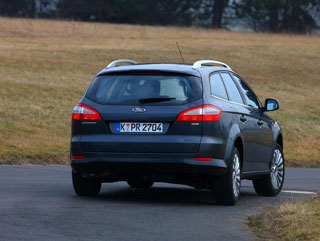
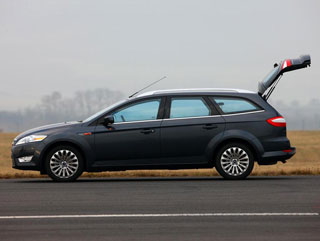
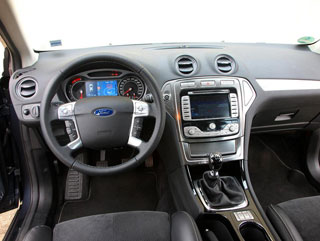
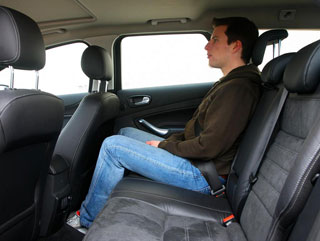
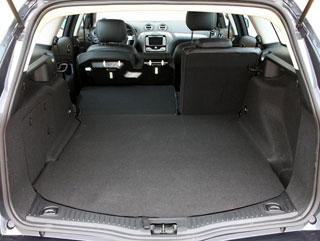
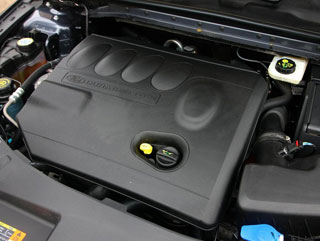
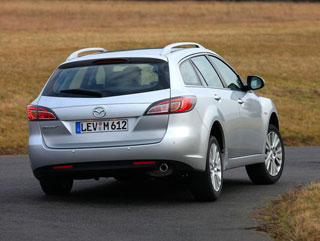
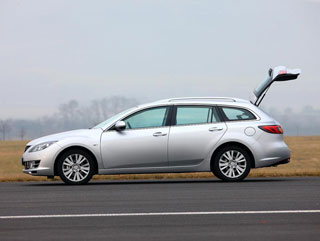
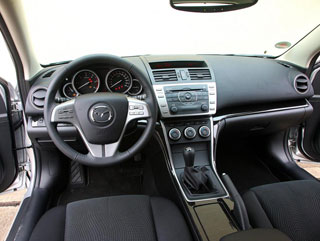
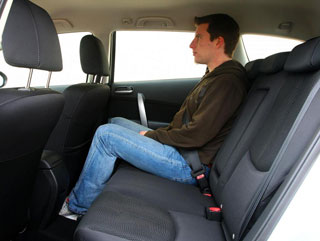
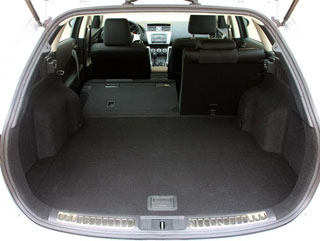
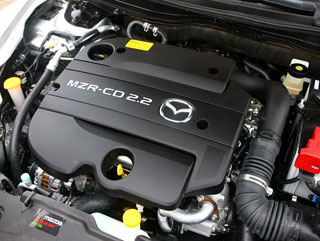
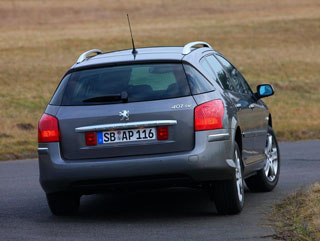
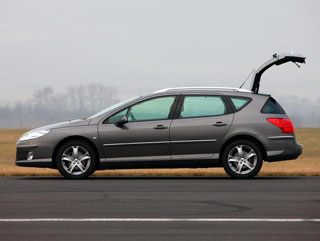
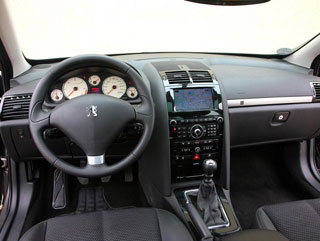
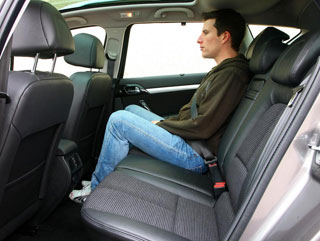
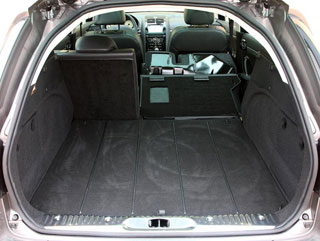
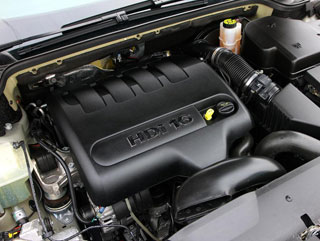
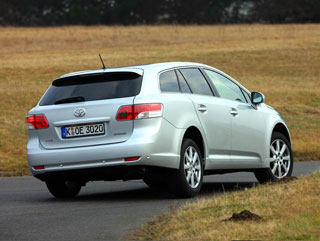
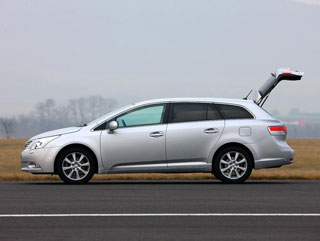
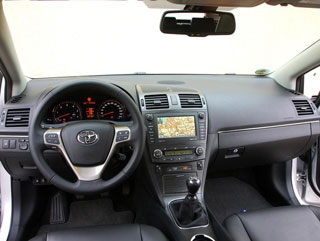
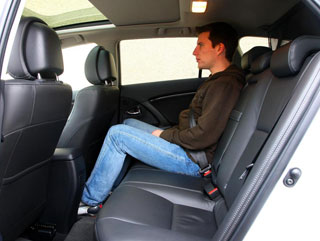
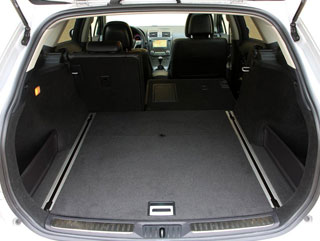
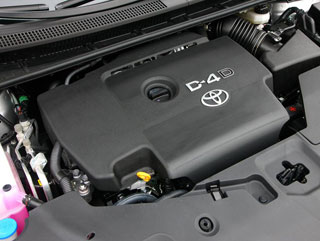
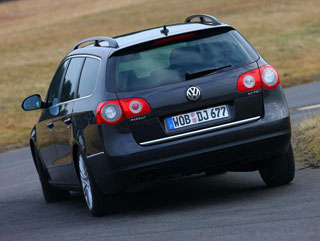
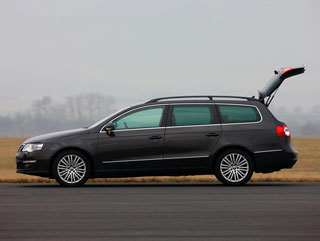

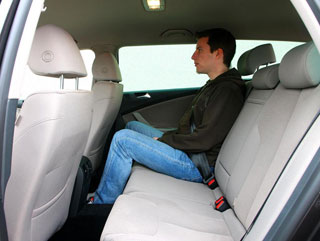
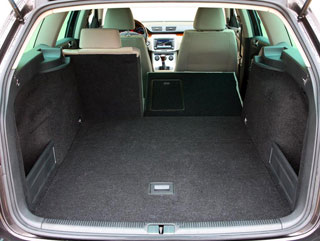
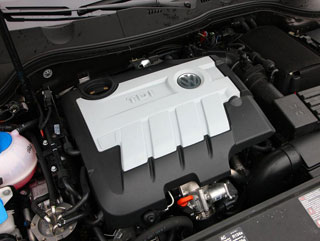
A source: Autozeitung.de
Toyota Avensis test driven video since 2009
Toyota Avensis Crash Video since 2009
Toyota Avensis test drive since 2009
Toyota Avensis Crash Test since 2009
Krassh Test: Detailed Information90%
Driver and passengers
53%
Pedestrians
86%
Children-passengers
86%
Active security system

